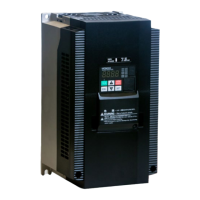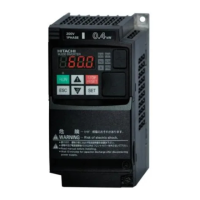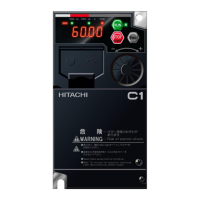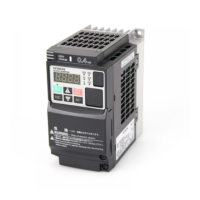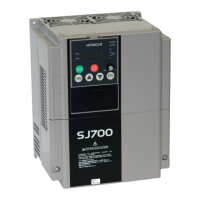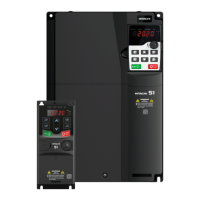4−87
Analog Input Operation
The WJ200 inverters provide for analog input
to command the inverter frequency output
value. The analog input terminal group
includes the [L], [OI], [O], and [H] terminals on
the control connector, which provide for Voltage
[O] or Current [OI] input. All analog input
signals must use the analog ground [L].
If you use either the voltage or current analog
input, you must select one of them using the
logic input terminal function [AT] analog type.
Refer to the table on next page showing the
activation of each analog input by combination
of A005 set parameter and [AT] terminal
condition. The [AT] terminal function is covered
in “Analog Input Current/Voltage Select” in
section 4. Remember that you must also set
A001 = 01 to select analog input as the
frequency source.
NOTE: If no logic input terminal is configured for the [AT] function, then inverter
recognizes that [AT]=OFF and MCU recognizes [O]+[OI] as analog input.
Using an external potentiometer is a common way
to control the inverter output frequency (and a good
way to learn how to use the analog inputs). The
potentiometer uses the built-in 10V reference [H]
and the analog ground [L] for excitation, and the
voltage input [O] for the signal. By default, the [AT]
terminal selects the voltage input when it is OFF.
Take care to use the proper resistance for the
potentiometer, which is 1~2 k
Ω, 2 Watts.
Voltage Input – The voltage input circuit uses
terminals [L] and [O]. Attach the signal cable’s
shield wire only to terminal [L] on the inverter.
Maintain the voltage within specifications (do
not apply negative voltage).
Current Input – The current input circuit uses
terminals [OI] and [L]. The current comes from a
sourcing
type transmitter; a
sinking
type will not
work! This means the current must flow into
terminal [OI], and terminal [L] is the return back
to the transmitter. The input impedance from
[OI] to [L] is 100 Ohms. Attach the cable shield
wire only to terminal [L] on the inverter.
AM H O OI L
+V Ref.
Voltage input
Current input
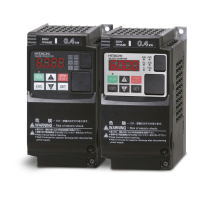
